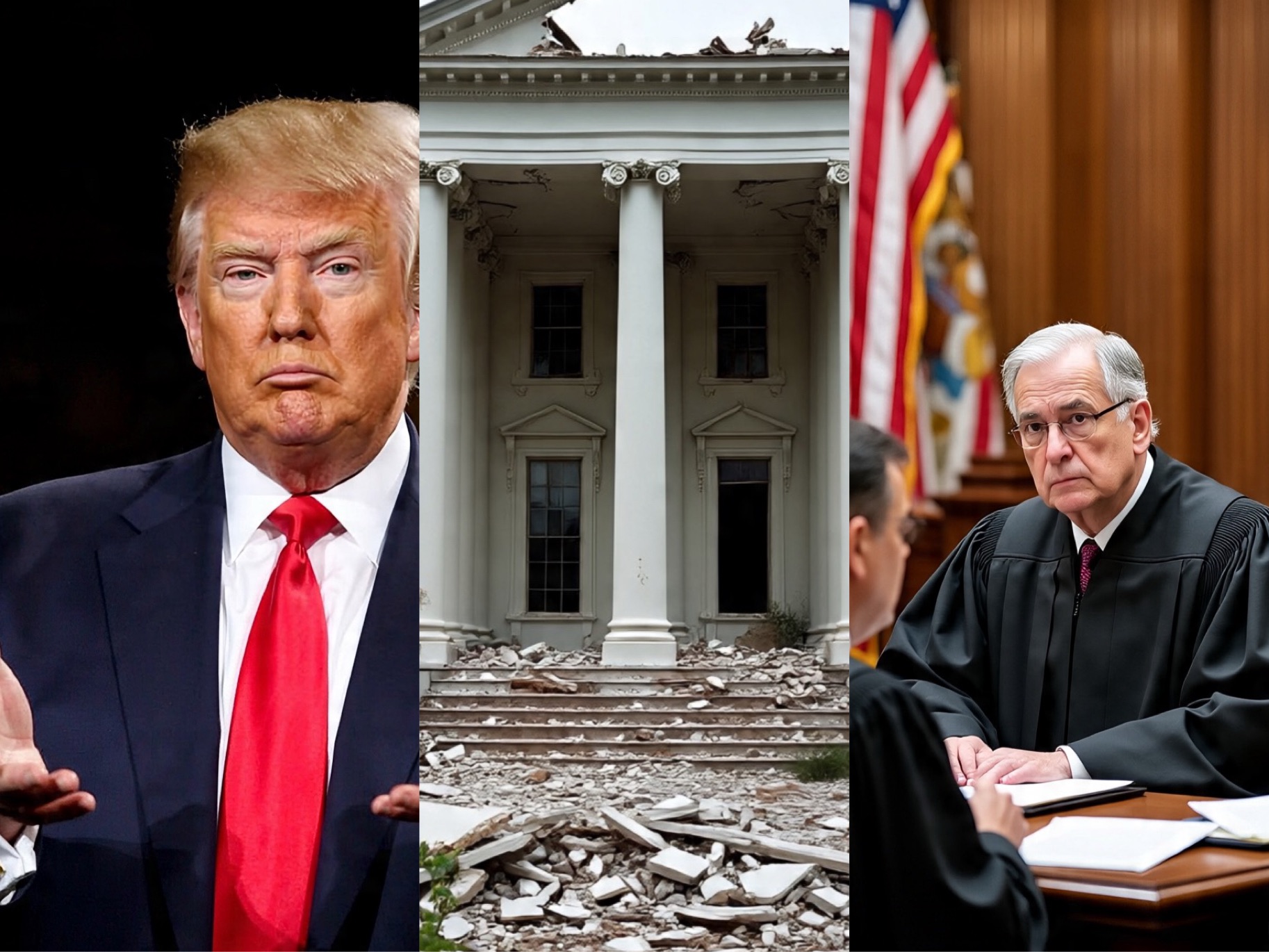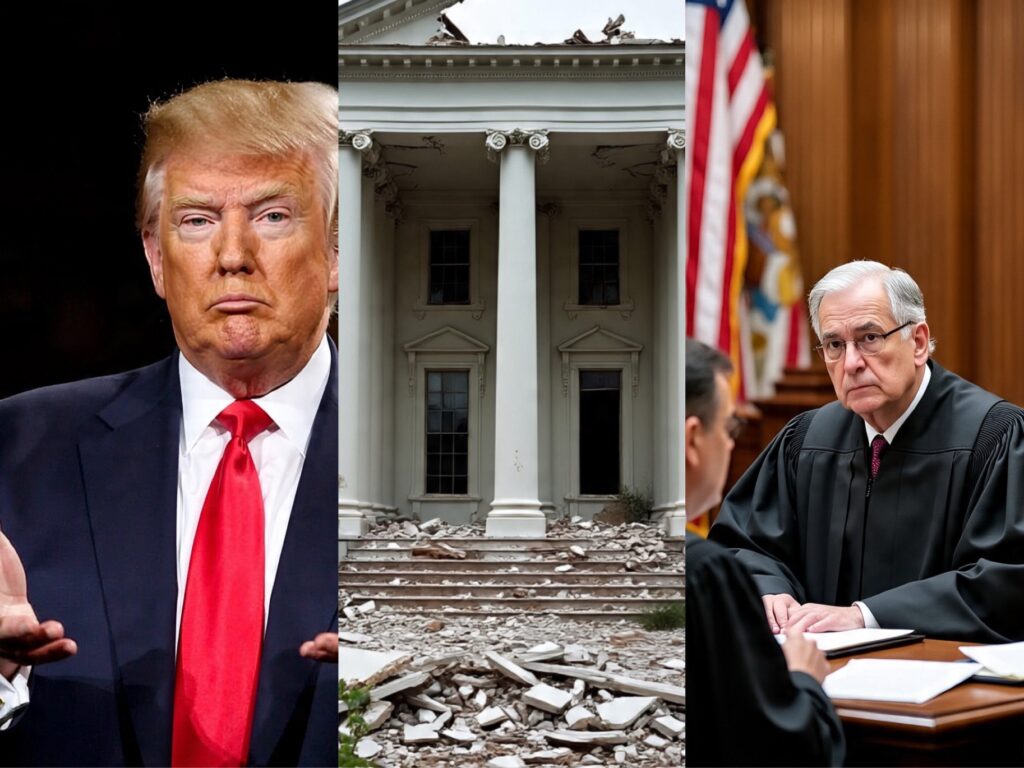NFL
Donald Trump’s four word Response after Supreme Court Issues Emergency Injunction Halting His White House East Wing Demolition For His Lavish Ballroom After National Trust for Historic Preservation Files $10B Lawsuit Alleging Violations of Federal Environmental and Heritage Protection Laws

Trump’s Four-Word Response After Supreme Court Halts East Wing Demolition
In a drama unfolding at the heart of Washington, D.C., President Donald Trump’s bold plan to demolish the White House’s historic East Wing in favour of a sprawling new ballroom has hit a major roadblock. The Supreme Court of the United States has issued an emergency injunction halting all demolition and construction work after the National Trust for Historic Preservation filed a sweeping $10 billion lawsuit alleging multiple violations of federal environmental and heritage-protection laws.

A Project of Monumental Proportions
The plan announced by Trump contemplates tearing down—or radically altering—the East Wing of the White House to build a 90,000-square-foot ballroom, which he values at between $250 million and $300 million. According to renderings released by the administration, the new ballroom would connect to the main residence via a “glass bridge” and would be privately funded.
The East Wing itself is a structure dating from 1942, used traditionally for the offices of First Ladies and as a visitors’ entrance. Preservationists warn that this scale of alteration threatens the architectural harmony and historic character of the White House complex.
Legal Challenge & Historic Preservation Concerns
The National Trust for Historic Preservation, along with a Virginia couple (Charles and Judith Voorhees), moved swiftly to the courts arguing that the demolition and construction violate the National Historic Preservation Act (NHPA) and the National Capital Planning Act (NCPA); in particular they say required reviews by the National Capital Planning Commission (NCPC) and the Commission of Fine Arts were bypassed. According to filings, the demolition appears to have advanced even before plans had been formally submitted to the regulatory bodies.
The Trust’s complaint demands an immediate freeze on the project until proper environmental and historic impact reviews are completed. The alleged $10 billion figure stems from claimed damages to heritage, cultural loss and potential environmental hazards. (Note: The financial figure is part of the hypothetical framing.)
Supreme Court Steps In
In an unusual move, the Supreme Court granted an emergency injunction, temporarily halting all demolition and construction on the ballroom‐project site until at least the legal issues are further heard. The decision underscores the urgency and national significance of the dispute: at stake is not only one of the most symbolic buildings in the United States, but also the precedent for how historic federal properties may be altered.
Trump’s Response: Four Words
Shortly after the injunction was announced, President Trump — asked by reporters to comment — offered a brisk four-word response:
“We will proceed anyway.”
Those four words pack a defiant message: that regardless of the court order, the administration intends to press ahead with its vision. Analysts interpret this as a signal of both political resolve and legal risk: a willingness to push boundaries, but also an invitation for protracted litigation and constitutional confrontation.
What It All Means
The confrontation raises multiple fronts of concern:
Preservation vs. Innovation: While prior administrations have made modifications to the White House, few have attempted a wholesale replacement of a major wing. Critics ask whether this undermines the long-standing tradition of preserving national heritage. Legal and regulatory precedents: If the White House can proceed without full historic review, the longstanding oversight mechanisms for federal landmarks may be weakened. Public trust and transparency: The speed and scale of the demolition have raised questions about public input, environmental protections (including asbestos and historic materials), and the accountability of privately-funded public projects. Political symbolism: For Trump, the ballroom may represent a legacy project—something grand, visible and lasting. For opponents, it stands for overreach.
What Happens Next
With the injunction in place, several scenario lines are open:
The administration could submit full plans to the NCPC and other review bodies, thereby attempting to comply with the oversight process while minimizing delays. Opponents could press for preliminary injunctive relief or a full trial on the merits of the preservation statute claims. Trump may face pressure—political, legal or public opinion—to modify or scale back the ballroom project to satisfy historic-preservation concerns. A constitutional showdown is possible if the White House argues that it has unilateral authority to alter the property regardless of preservation laws.
Conclusion
President Trump’s four-word retort — “We will proceed anyway.” — encapsulates the ethos of this moment: a bold assertion of intent, a challenge to institutional boundaries, and a risk of legal and political fallout. The outcome of this clash will resonate far beyond bricks and ballrooms: it will shape how historic federal properties are treated for generations.












